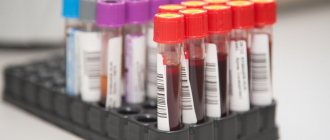Functions of calcium in the body
- Provides contraction of muscle tissue;
- Ensures the functioning of the nervous (participates in the transmission of nerve impulses) and cardiovascular (normalizes heart rate) systems;
- Provides strong bones and tooth enamel;
- Regulates the work of enzymes (enzymes) and hormones;
- Activates iron metabolism;
- Normalizes blood clotting (thrombosis process);
- Corrects the permeability of cell membranes;
- Improves intercellular processes, in particular, cellular reception (information exchange);
- Normalizes the function of the endocrine glands (parathyroid glands, etc.).
Calcium and phosphorus. Exchange Mechanisms
These two macronutrients are closely related to each other. When the level of one increases, the level of the other immediately decreases. Hypercalcemia (high serum calcium) is accompanied by a decrease in phosphate concentrations. Conversely, an increase in phosphate provokes the development of hypocalcemia (low calcium levels in the blood). Both conditions require consultation with a doctor, since they carry a certain risk to human health.
The thyroid and parathyroid glands regulate the phosphorus-calcium balance. This happens as follows:
- hypocalcemia (calcium deficiency) is eliminated by the destruction of bone tissue with the subsequent release of calcium under the action of parathyroid hormone of the parathyroid glands;
- hypercalcemia is eliminated by the movement of excess calcium into bone tissue under the action of the thyroid hormone calcitonin;
- Parathyroid hormones in combination with vitamin D3 improve the absorption of calcium in the gastrointestinal tract and its reabsorption in the kidneys.
Indications for analysis
- Osteoporosis (metabolic skeletal disease, pathological decrease in bone density), tooth decay;
- Muscular hypotonia (decreased muscle tone);
- Peptic ulcer of the stomach and duodenum;
- Cardiovascular diseases (impaired cardiac tone and rhythm);
- Endocrine pathologies (hyperthyroidism);
- Kidney diseases (renal failure, urolithiasis);
- Malignant pathologies (cancer of the lung, breast, brain, throat, kidney, blood).
Symptoms that require you to check your blood calcium levels
Hypercalcemia (excess calcium in the blood)
- Decreased or loss of appetite;
- Prolonged nausea, vomiting;
- Prolonged absence of stool;
- Frequent urination, polyuria (increased urine production);
- Intense thirst;
- Soreness and aching in the bones;
- Weakness, increased fatigue;
- Headache;
- Apathy.
Hypocalcemia (calcium deficiency in the blood)
- Frequent fractures
- Painful cramps in the abdominal area;
- Paresthesia (impaired sensitivity, tingling sensation, numbness in the limbs);
- Tremor (shaking) of fingers;
- Feeling of numbness around the mouth;
- Irregular heart rhythm (arrhythmia);
- Muscle cramps (uncontrollable muscle spasms).
Additionally
A blood calcium test is also prescribed:
- during routine medical examinations (in combination with other biochemical studies);
- in the program of preparing the patient for certain operations;
- to monitor the effectiveness of treatment with calcium preparations;
- in the rehabilitation period after kidney transplantation (monitoring the patient’s health status);
- if there are certain changes in the electrocardiogram;
- for a preliminary assessment of calcium-phosphorus metabolism.
Indications for the study
Blood test for calcium
is prescribed in the following cases:
- planned preventive examination;
- kidney pathologies (in patients with such diseases, the level of macronutrients is often reduced);
- suspicion of excess Ca (in the presence of symptoms such as nausea, loss of appetite, weakness, excessive thirst);
- frequent muscle cramps;
- diseases that are associated with calcium metabolism disorders (oncology, thyroid pathologies, etc.);
- some abnormalities detected on the cardiogram;
- symptoms of macronutrient deficiency (hand tremors, muscle cramps, spastic abdominal pain);
- treatment of calcium metabolism disorders.
Calcium level in blood
Important! Standards may vary depending on the reagents and equipment used in each particular laboratory. That is why, when interpreting the results, it is necessary to use the standards adopted in the laboratory where the analysis was carried out. You also need to pay attention to the units of measurement.
Reference values adopted in the Invitro and Helix laboratories:
| Patient age | Total calcium, mmol/l |
| 2 – 10 days | 1,90 – 2,60 |
| 10 days – 2 years | 2,25 – 2,75 |
| 2 – 12 years | 2,20 – 2,70 |
| 12 – 18 years old | 2,10 – 2,55 |
| 18 – 60 years | 2,15 – 2,50 |
| 60 – 90 years | 2,20 – 2,55 |
| Over 90 years old | 2,05 – 2,40 |
Hypercalcemia (high calcium)2
- Dehydration (dehydration);
- Long-term use of antacids, calcium and lithium salts, androgens, vitamin D.
- Excess vitamin D in the body;
- Primary hyperparathyroidism (hyperplasia, adenoma or cancer of the parathyroid glands) is one of the most common “serious” causes of calcium excess;
- Acute renal failure and other kidney diseases;
- Thyrotoxicosis (endocrine disorder characterized by a persistent increase in thyroid hormones);
- Impaired function and insufficiency of the adrenal glands, Addison's disease (a disease in which the adrenal glands cannot fully secrete hormones, in particular cortisol);
- Immobilization hypercalcemia (a condition after and during prolonged immobilization (immobility) due to injuries, congenital dislocation of the hip, spinal tuberculosis, etc.);
- Malignant processes that occur with bone damage (the tumor secretes a hormone similar to parathyroid, which increases the release of calcium into the bloodstream);
- Blood cancer (myeloma, leukemia, lymphoma, etc.);
- Sarcoidosis (a systemic disease that affects various internal organs, proceeds with the formation of granulomas) and other granulomatous pathologies;
- Burnett's syndrome (milk-alkali syndrome, which develops with long-term simultaneous intake of milk and alkaline drugs, food additives and drugs, most often calcium carbonate);
- Overdose of thiazide diuretics.
Important! The interpretation of the results is always carried out comprehensively. It is impossible to make an accurate diagnosis based on only one analysis.
4.What are the risks and what could interfere with the analysis?
What are the risks of a calcium blood test?
If you are taking a blood test for calcium, then possible risks may only be associated with taking blood from a vein. In particular, the appearance of bruises at the puncture site and inflammation of a vein or artery (phlebitis). Warm compresses several times a day will relieve phlebitis. If you are taking blood thinning medications, you may bleed at the puncture site.
What can affect the results of the analysis?
A calcium blood test may give inaccurate results if:
- You took calcium or vitamin D in any form (not only specially prepared preparations, but also, for example, dairy products) immediately before the test;
- You have had dialysis;
- You recently had a large blood transfusion.
Hypocalcemia (low calcium)3
- Hypoalbuminemia (lack of proteins) in nephrotic syndrome and liver pathologies is the most common cause;
- Lack of calcium, magnesium in food;
- Vitamin D deficiency in rickets (in children) and osteomalacia (lack of bone mineralization in adults);
- Acute pancreatitis, complicated by pancreatic necrosis (inflammation of the pancreas with destructive changes in organ tissue);
- Chronic renal failure;
- Alcoholism (impaired absorption of nutrients and, as a result, an acute lack of enzymes and other metabolic components).
- Hypoparathyroidism (decreased function of the parathyroid glands) primary (hereditary) and secondary (autoimmune or after surgery);
- Congenital resistance to the effects of parathyroid hormone;
- Increased phosphate content;
- Condition during treatment with antitumor drugs, anticonvulsants, neomycin, glucocorticoids, laxatives, etc.
Important!
In pregnant women, blood calcium is normally reduced, along with a decrease in albumin content.
In children, calcium deficiency is fraught with such disorders as hypoplasia (softening) of tooth enamel, retardation in physical development and growth, increased fatigue and drowsiness, and constipation.
Calcium deficiency is corrected by prescribing medications containing this macronutrient. The dosage is calculated individually and only after a mandatory biochemical analysis, the results of which evaluate the actual calcium content in the blood (but not in the bones!).
Important!
Based on the results of a test for total calcium in the blood serum, one cannot judge the calcium content in the bones. To do this, densitometry is performed - a study that determines the degree of bone mineralization.
Ca (calcium)(ICP-MS)
Ca (calcium)
- the most important macronutrient in the body, the indicator determines the state of calcium metabolism, primarily in bone tissue. Its excretion in urine is closely related to bone metabolism, calcium intake from food and kidney function. When using a low-calcium diet, its content in urine does not exceed 3.75 mmol/day. The required concentration of calcium in the blood is maintained within strict limits using various mechanisms for regulating bone tissue metabolism, absorption in the gastrointestinal tract, and reabsorption in the kidneys.
Calcium is found in the blood in three forms:
- ionized (free) calcium, which is physiologically active;
- calcium complexed with anions - lactate, phosphate, bicarbonate, citrate;
- calcium bound to proteins - mainly albumin.
Functions of calcium in the body
In the body, calcium performs the following functions: creates the basis and ensures the strength of bones and teeth; participates in the processes of neuromuscular excitability (as an antagonist of potassium ions) and muscle contraction; regulates the permeability of cell membranes; regulates enzymatic activity; participates in the process of blood coagulation (activates VII, IX and X coagulation factors).
Calcium content in hair and nails
The calcium content in hair and nails, in contrast to its content in the blood, varies widely. The level of calcium in these biomaterials is not directly related to the level of calcium intake. An increase in the level of calcium in the hair may reflect not only its excess intake into the body, but, on the contrary, increased mobilization and loss of calcium from the bones (for example, with osteoporosis in menopause). A decrease in calcium levels in hair has been observed in cases of myocardial infarction accompanied by increased aortic calcification. In children during a period of active growth, which is characterized by increased calcium intake, its level in the hair may decrease and show no correlation with the level of its intake. Calcium metabolism and calcium content in tissues are associated with the metabolism of other metals and anions: phosphorus, magnesium, iron, zinc, cobalt, potassium, sodium, heavy metals.
Calcium metabolism changes under stressful situations, prolonged bed rest, pathology of the kidneys, pancreas and thyroid glands and the use of medications.
Indications:
- diagnosis and screening of osteoporosis;
- muscle hypotonia;
- convulsive syndrome;
- paresthesia;
- peptic ulcer of the stomach and duodenum;
- polyuria;
- cardiovascular pathology (arrhythmias and impaired vascular tone);
- preparation for surgery;
- hyperthyroidism;
- malignant neoplasms (lung cancer, breast cancer);
- urolithiasis (X-ray-positive stones) and other kidney diseases;
- bone pain;
- assessment of the condition of the parathyroid glands;
- diagnosis and control of rickets therapy;
- diseases of the pituitary gland and thyroid gland;
- alopecia;
- preclinical and hygienic diagnostics if there is a suspicion of an imbalance in the body’s supply of microelements.
Preparation Whole blood:
It is recommended to donate blood in the morning, between 8 am and 12 pm. Blood is drawn on an empty stomach or after 4–6 hours of fasting. It is allowed to drink water without gas and sugar.
On the eve of the examination, food overload should be avoided.
Urine:
On the eve of the test, it is not recommended to eat vegetables and fruits that can change the color of urine (beets, carrots, cranberries, etc.), or take diuretics.
Collect the morning portion of urine excreted immediately after sleep. Before collecting urine, it is necessary to perform a thorough hygienic toilet of the external genitalia. When urinating for the first time in the morning, release a small amount of urine (the first 1-2 seconds) into the toilet, then collect the entire portion of urine in a clean container without interrupting urination. Pour approximately 50 ml of urine into a sterile plastic container with a screw cap. When collecting urine, it is advisable not to touch the container to your body. It is necessary to deliver the container with urine to the medical office as soon as possible from the moment the biomaterial is taken.
Women are not recommended to take a urine test during menstruation.
Hair:
- hair should be clean and thoroughly dried;
- Perm without coloring and hair bleaching do not interfere with the analysis. It is recommended to analyze dyed hair two months after the dyeing procedure;
- stop using medicated shampoos, anti-dandruff products, mousses, medicated balms and gels two weeks before submitting your hair for analysis. If you use drugs like Antisedin, you must stop using them three months before the test;
- Wash your hands thoroughly before cutting hair. Latex gloves are not recommended because they are treated with talc, which may contaminate the hair sample. The tool for cutting hair (scissors or razor) must have clean cutting surfaces;
- Carefully cut off the hair (do not pull it out!) in the immediate vicinity of the roots, in four to five places on the back of the head closer to the neck area. Leave the length of the cut hair 3-5 cm from the roots, and cut off the excess. If the hair is very short, then it must be cut in an amount that can fill a teaspoon;
- Collect the cut hair into a bun 2–3 mm thick and place it in a small inner envelope. In the area of the envelope where the root end of the strand is located, write “root”;
- The inner small envelope along with the collected material and the completed order form must be placed in a large envelope.
Interpretation of results
Units of measurement of calcium in the blood: mmol/l.
Increased calcium levels (hypercalcemia):
- primary hyperparathyroidism (hyperplasia, adenoma or carcinoma of the parathyroid glands);
- malignant tumors with: a) osteolysis of primary or metastatic bone lesions, especially with metastases of breast, lung, and kidney cancer; b) ectopic synthesis of parathyroid hormone in carcinoma of the kidneys, ovaries, thyroid gland, uterus; thyrotoxicosis;
- immobilization hypercalcemia (during immobilization for therapeutic purposes for injuries, Paget's disease, congenital hip dislocation, spinal tuberculosis, etc.);
- hypervitaminosis D;
- adrenal insufficiency;
- hemoblastoses (myeloma, lymphomas, leukemia - with the breakdown of bone tissue in areas of hyperplasia);
- idiopathic hypercalcemia of newborns (Williams syndrome);
- hereditary hypocalciuric hypercalcemia;
- acute renal failure;
- sarcoidosis and other granulomatous diseases; iatrogenic hypercalcemia;
- milk-alkali syndrome;
- kidney disease (tertiary hyperparathyroidism);
- overdose of thiazide diuretics.
Low calcium levels (hypocalcemia):
- primary hypoparathyroidism (hereditary, X-linked, DiGeorge syndrome);
- secondary hypoparathyroidism (as a result of surgery, autoimmune);
- hypoparathyroidism in newborns with hyperparathyroidism in the mother;
- hypomagnesemia; pseudohypoparathyroidism (hereditary disease caused by a lack of tissue target receptors for parathyroid hormone);
- hypovitaminosis D with rickets in children and osteomalacia in adults (as a result of reduced insolation, malabsorption and nutritional disorders);
- hypoalbuminemia in nephrotic syndrome and liver pathology; acute pancreatitis with pancreatic necrosis;
- chronic renal failure; liver failure;
- taking antitumor drugs, anticonvulsants, EDTA, neomycin, sequestration of calcium ions (acute alkalosis, increased phosphates, transfusion of large amounts of citrated blood).
Urine:
Urine calcium units: mmol/day.
Level up
:
- prolonged exposure to sunlight;
- hyperparathyroidism;
- Itsenko-Cushing syndrome; acromegaly;
- osteolytic metastases of cancer or sarcoma;
- multiple myeloma;
- osteoporosis, vitamin D overdose (in many cases, hypercalciuria is observed before the serum Ca level increases);
- increasing calcium in the diet and dairy diet;
- distal renal tubular acidosis;
- idiopathic hypercalciuria;
- thyrotoxicosis;
- Paget's disease;
- Fanconi syndrome;
- hepatolenticular degeneration;
- schistosomiasis;
- sarcoidosis;
- malignant tumors of the breast and bladder;
- deforming osteitis;
- immobilization;
- medications (furosemide, ammonium chloride).
Downgrade:
- hypoparathyroidism, pseudohypoparathyroidism;
- rickets;
- osteomalacia;
- all cases of decreased serum Ca levels (except those associated with kidney disease);
- many cases of nephrosis;
- acute nephritis;
- malignant bone tumors;
- osteoblastic metastases;
- hypothyroidism;
- celiac disease - sprue;
- steatorrhea;
- hypocalciuric hypercalcemia;
- prostate cancer with metastases.
Hair:
Units of measurement: µg/g dry weight.
Increasing values:
- increased mobilization and loss of calcium from bones (osteoporosis), risk of developing calcium deficiency;
- activation of calcium metabolism;
- general changes in the body’s metabolism, the influence of other elements (including toxic ones), medications, features of the metabolism of hair and nails, the influence of hygiene and cosmetic products;
- excess calcium intake into the body.
Reducing values:
- low calcium intake, inadequate nutrition, fasting;
- high level of calcium consumption by the body (for example, a period of active growth);
- changes in regulatory processes, pathological processes affecting calcium metabolism, the influence of other elements, medications;
- osteoporosis in the postmenopausal period.
COVID-19 and calcium deficiency
In a 2021 study, Chinese doctors identified a pattern - in adult patients with a serum calcium level of less than 2 mmol/l, the prognosis for the course of coronavirus infection was worse than in patients with normal calcium levels. The study involved 241 patients with confirmed coronavirus.
Sources:
- Data from Invitro and Helix laboratories.
- James L. Lewis III, MD, Brookwood Baptist Health and Saint Vincent's Ascension Health, Birmingham. Hypercalcemia, MSD reference book, professional Russian version, 2021.
- James L. Lewis III, MD, Brookwood Baptist Health and Saint Vincent's Ascension Health, Birmingham. Hypocalcemia, MSD reference book, professional Russian version, 2021.
- Jia-Kui Sun. Serum calcium as a biomarker of clinical severity and prognosis in patients with coronavirus disease 2021, - data from the US National Library of Medicine PubMed, 2021.









